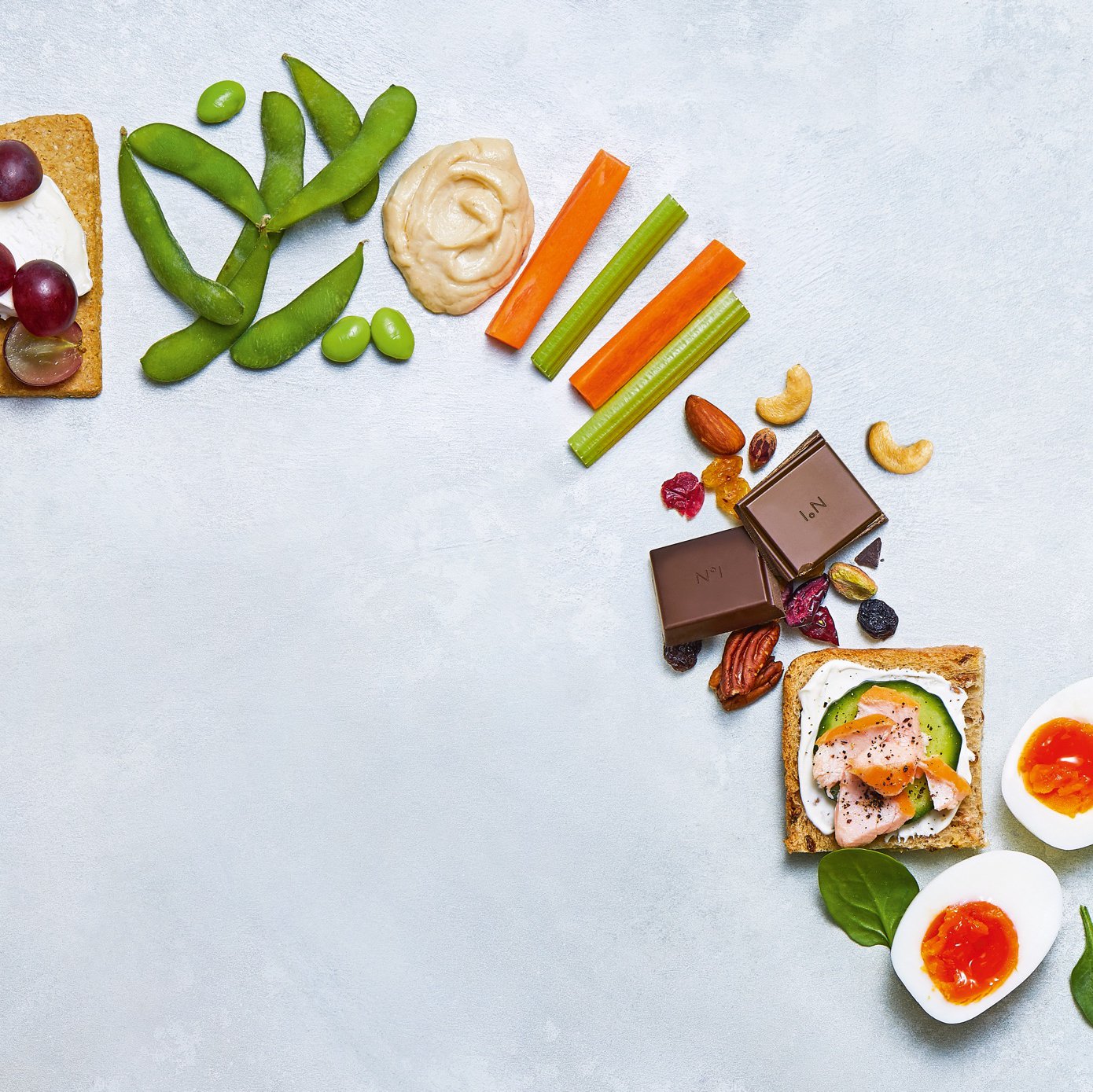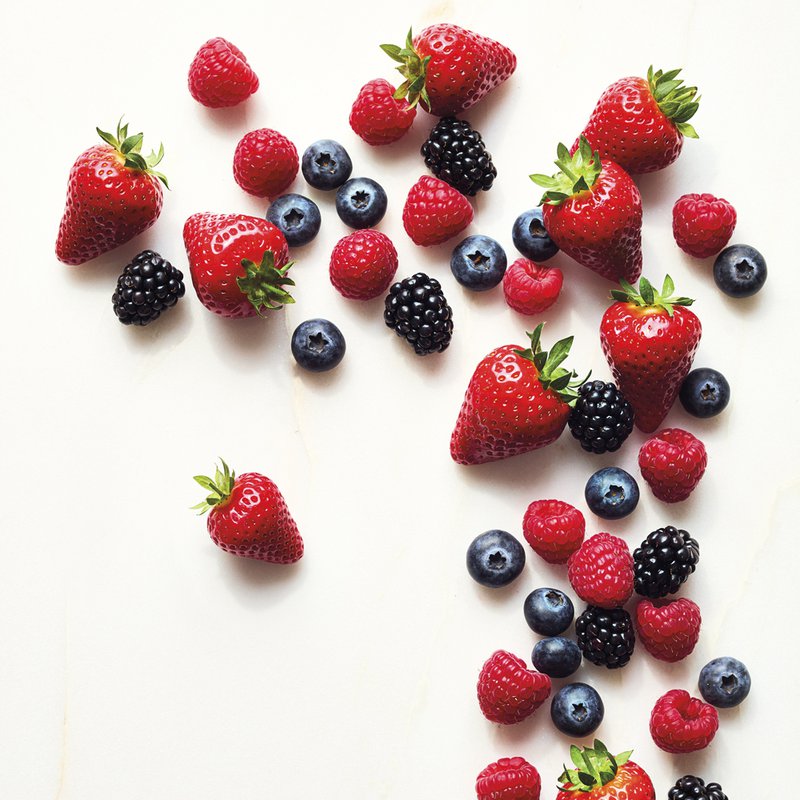One small change: reset your snacks

Do you regularly find yourself craving a midmorning biscuit or raiding the fridge before bed? You’re not alone: Britain is teeming with snackers. Around 50 years ago, it was typical for a family to have three meals at the same time every day, so their bodies were accustomed to knowing when to expect food. According to a survey in the latest Waitrose Food & Drink Report, 95% of respondents said they snack between meals, with one in two saying they snack two or three times a day or more. For many, set mealtimes are a thing of the past – almost one third (30%) said they sit down for only two meals a day, having snacks instead of a third meal.
So is this change in behaviour affecting our health? The short answer is yes, in the main, because when we reach for snacks, we are often tempted by unhealthy options: chocolate, crisps, biscuits and cakes. All these foods are extremely calorie-dense, making it easy to overeat. A study in Global Public Health found snacks are contributing a whopping 500 calories a day, or 25% of our suggested energy intake. Perhaps more importantly, these calories don’t provide much nutritional value.
“If your snacks are mainly UPFs (ultra-processed foods; see right), which are high in sugar, fat or salt, then you won’t be getting the fibre, vitamins and minerals your body needs,” explains Nichola Ludlam-Raine, registered dietitian and author of How Not to Eat Ultra-Processed. “UPFs are typically low in fibre and nutrients, which makes them less filling, easier to overeat and less likely to satisfy your appetite than wholefoods.”
As well as lacking nutrients, these types of snacks can also impact your blood-sugar levels. “Having frequent high-sugar snacks can cause your blood sugar to rise quickly. For some people, this can result in a dip in blood sugar around two to four hours later, leaving you hungry and reaching for food again,” says Nichola. “Plus, these snacks are eaten more quickly because they’re softer and easier to chew and swallow, which delays signals of fullness.”
But not all snacking is bad for you. Even though your parents might have instilled the belief that three square meals a day is healthiest, “snacking can provide a boost of energy if several hours pass between meals and blood sugar levels drop,” explains Rob Hobson, registered nutritionist and author of Unprocess Your Life. “When you opt for wholefoods such as fruit or nuts, snacks are a helpful way of getting extra nutrients into your diet and meeting your 5 a day.” A recent study from personalised nutrition company ZOE found that participants who snacked on wholefoods had a lower body weight, less abdominal fat and lower levels of fat and sugar in their bloodstream than those who ate unhealthy snacks.
When it comes to making your own, Nichola advises a ‘protein and produce’ approach, combining a source of protein (houmous, for example) with a source of fibre (such as carrots). Other examples include oatcakes and peanut butter, an apple with cheese, or plain yoghurt with berries. While a homemade snack made with wholefoods will always be the optimal choice, it’s good to know that if you’re caught hungry on the hoof, there are plenty of healthier options out there. Look out for Bio&Me’s oat bars (no added sugars or salt), Kallo lentil cakes (high in protein), sea-salted popcorn (no added sugar), Itsu seaweed thins (rich in vitamin B12 and iodine), plus egg and spinach protein pots.
When we reach for snacks, we are often tempted by unhealthy treats. But simply switching your snack choices could make a significant difference to your overall diet and health. The key is to be mindful and snack smart. This generally means planning to make sure you have healthy options to hand, and limiting snacks that are high in sugar, salt and fat. And, of course, not worrying about the odd treat – because we all need that chocolate biscuit sometimes.
WHAT ARE UPFs
Ultra-processed foods (UPFs) have undergone industrial processing and modification from their original state to enhance flavour or texture and prolong shelf life. In simpler terms, they contain ingredients not used in home cooking, such as sweeteners, colouring, stabilisers and preservatives. They are typically low in fibre and high in sugar, fat or salt.
6 EASY-TO-MAKE SAVVY SNACKS
1 FRUITY TRAIL MIX Stir together your favourite granola with some sunflower seeds, dried goji berries and dried blueberries. Store in an airtight jar for grazing and keep for up to 4 weeks.
2 WHIPPED COTTAGE CHEESE Empty a tub of cottage cheese into a food processor and whizz until smooth and creamy. Transfer to a bowl and stir through lemon juice plus some chopped fresh herbs such as dill, chives and/or parsley. Serve with cucumber sticks.
3 BERRY COMPOTE Put fresh or frozen berries in a saucepan with a little honey or maple syrup and cook over a low heat until broken down. Cool, then store in an airtight container in the fridge for up to 7 days. Swirl through low-fat natural yoghurt and top with chopped nuts, if liked.
4 NUT BUTTER DATES Stuff pitted dates with nut butter, drizzle with melted dark chocolate and leave to set.
5 CAJUN ROAST CHICKPEAS Rinse and dry canned chickpeas, toss with olive oil and sprinkle with Cooks’ Ingredients Deep South Cajun Rub. Roast in a hot oven until golden and crunchy (about 25 minutes).
6 AVOCADO TOPPER Mash avocado with lime juice. Season and spread on oat cakes or rye bread; top with anything you like – chilli or chicken work well.
We all know that fruit is good for us, but you might be surprised at just how big-hitting these small mouthfuls can be”
